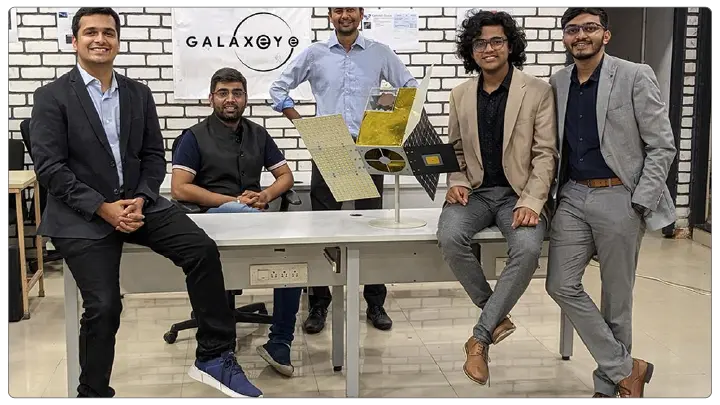December 2025
GalaxEye is preparing to launch Mission Dristi, the first Earth observation satellite in history, to integrate multiple sensors on a single platform. With a projected launch date of the first quarter of 2026, this mission is the first step in GalaxEyes' larger strategy to build a constellation of eight to ten satellites over the following four years.

With a weight of about 160kg, Mission Dristi is praised as the biggest privately constructed satellite in India and one of the highest resolution systems created in the country. By carrying both high-resolution optical payloads and synthetic aperture radar (SAR), the satellite will be able to gather data day or night and in any weather. GalaxEye claims that this dual capability will open new avenues for actionable geospatial intelligence.
GalaxEye sees demand across a wide range of sectors of defense and security, infrastructure monitoring, disaster response, agriculture, utilities, financial services, and insurance. Converting satellite data into practical intelligence for businesses and governments. Mission Drishti places India firmly on the world space map, according to co-founder and CEO Suyash Singh.
The satellite has undergone extensive environmental and structural testing, including evaluations in extremely hot and cold temperatures, to guarantee resilience. GalaxEye believes that the growing demand for next-generation imaging, particularly for real-time monitoring and amid changing geopolitical pressures, will make its multi-sensor AI-enhanced architecture unparalleled. Agribusinesses, utilities, insurers, and defense agencies have already expressed interest.
Using high-frequency imaging and advanced AI-driven sensor fusion, Galaxy's long-term goal is to become a global leader in space-based analytics. The company intends to increase the size of its satellite constellation to supply near-real-time earth observation data for strategic and commercial applications globally. This forward-looking vision highlights India's increasing influence in the private space sector and reaffirms the country's dedication to leading the way in earth observation technology innovation.
December 2025
December 2025
December 2025
December 2025